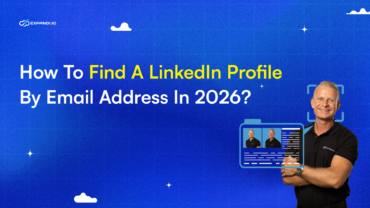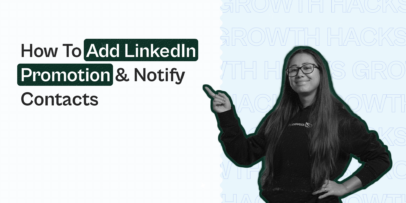Steal Your Competitor’s Ad Strategy for More Leads – Expandi
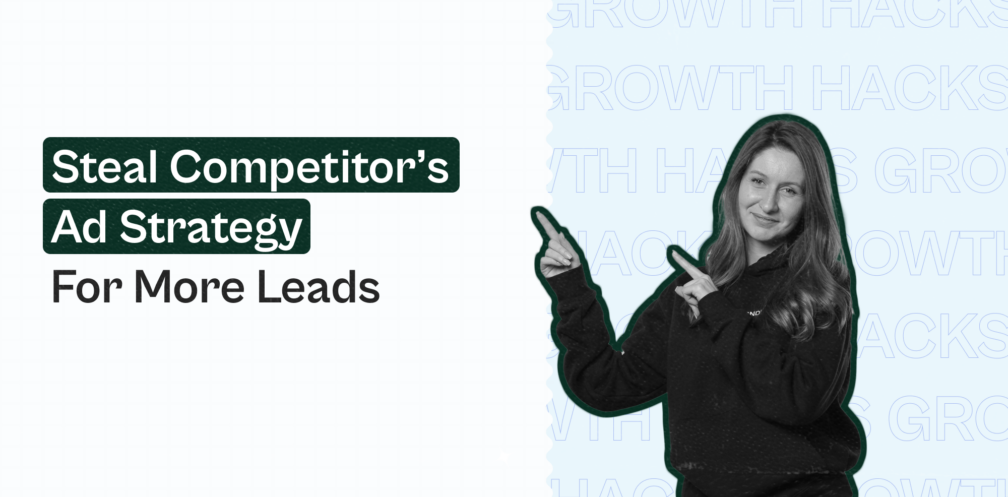
Do you already know who your competitors are?
If so, there might be an untapped audience out there interested in your product or services – but they just don’t know about it yet.
You see…
Having competitors in your niche validates your offer.
Meaning, there are other methods out there that work.
Based on that, you can look at your competitor’s advertising strategy, emulate and improve it, and then, use those tactics to elevate your own business.
For example, there are quite a few other LinkedIn automation tools on the market.
But the Unique Selling Proposition of Expandi is that it’s the safest tool out of them all.
With that in mind, I can spy on my competitors’ advertising strategies, see what works, what doesn’t, and adapt the working ones for Expandi. If done well, I will be even able to convert some of my competitors’ audiences to start using Expandi!
But even if you don’t know about your competitors’ advertising tactics, don’t worry, I’ll show you how to identify them, spy on them, and I’ll also share some LinkedIn marketing campaigns to get the most of this info.
Here’s what I’ll cover:
- How to Identify Your Competitors Online
- Spying on Competitors on LinkedIn
- 3 LinkedIn Tactics That Take Advantage of Your Competitor’s Advertising Strategy
Ready?
Speaking of, we’re constantly sharing the latest outreach templates and subject lines you can use in your marketing campaigns in our private Facebook group. Be sure to join the LinkedIn Outreach Family today!
And here’s how to get your brand out there and start targeting a group of people who may already be interested in your product and let your voice be heard.

How to Identify Your Competitors Online
First things first – do you know who your competitors are?
Competitive research is the backbone of any strong marketing campaign.
After all, if you don’t know your competitors, you won’t be able to differentiate yourself and your products.
If you already know your competitors, feel free to skip ahead.
Otherwise, here are a few quick tactics you can use to find your competitors on LinkedIn.
Market research
Doing market research on LinkedIn is quite simple.
If you already have your product, solutions, and benefits defined (which you should), all you need to do is run a few LinkedIn filtered searches to find your competitors.
On LinkedIn, you can filter companies by:
- Location – Country and the city.
- Industry – E.g. marketing and advertising, online software.
- Company size – Select from 1-10,000+ employees.
- Job listings on LinkedIn – Yes or no (not relevant in this case).
- Connections – 1st connections only. Meaning, you can filter for people you’re connected with from those companies.
As an example:
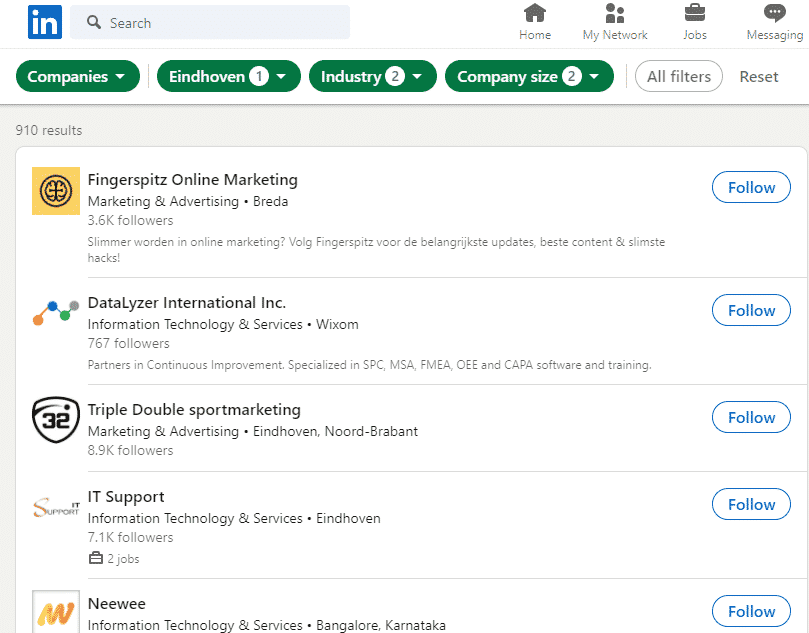
Alternatively, you can also run a similar search but for people.
Something along the lines of – CEO role, job industry, location, and so on.
But if you’re looking for a more advanced LinkedIn search, you might want to consider LinkedIn Sales Navigator.
Moving on, some other competitor research tactics include:
LinkedIn groups
Even if you might not find your competitors in LinkedIn groups, you can still find other important info.
Simply switch the LinkedIn search filter to ‘Groups’ and type in a keyword related to your niche.
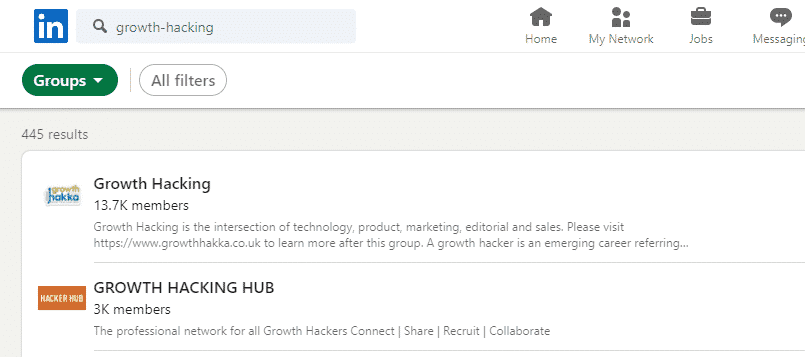
There you’ll find business owners (competitors) or potential leads, posting and sharing content relevant to your niche.
If you want to get noticed, start with smaller groups and work your way up. Join groups, read their content, ask questions, and you’ll learn what they engage with more.
As a bonus, you might also start generating leads this way.
Analyze search engine results
Finally, the easiest and possibly the most effective way to identify your competitors is to just Google them.

When it comes down to it, many of your competitors are already writing about topics close to your value offer and solutions.
If you examine your solution closely, you should be able to identify keywords that are central to your proposition.
From there, look those keywords up on Google and see who is competing with your content on Google.
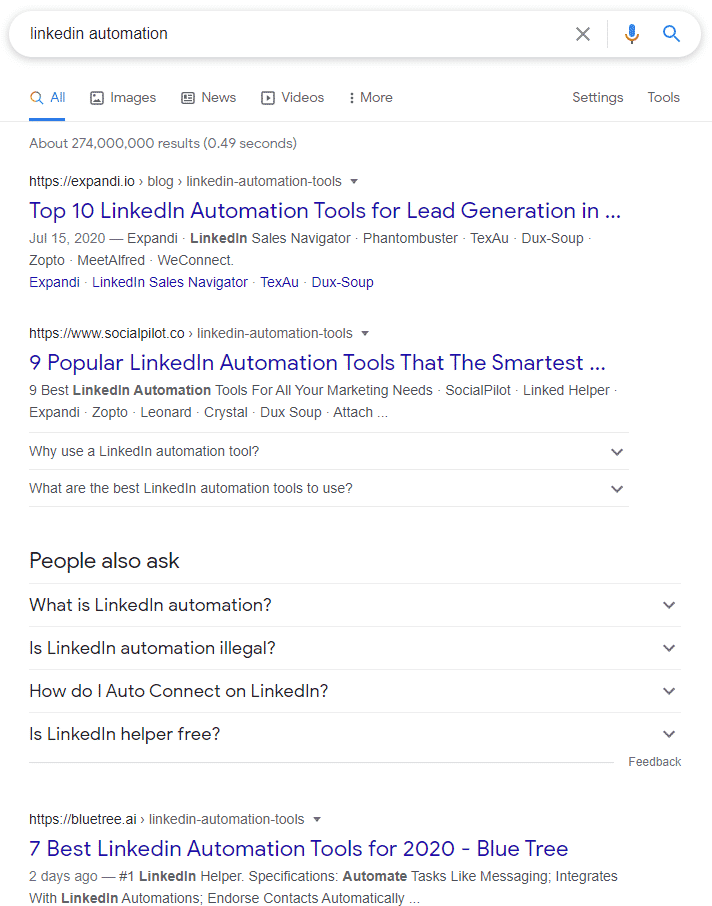
Just like that, I can find other LinkedIn automation tools and start studying their advertising strategies.
Some other ways you can use search engines results to identify your competitors include:
- Looking at paid data
- Facebook groups (we’ll explore this below).
- Searching for your keywords on Twitter (and exploring other, suggested pages).
- Using LinkedIn Sales Navigator’s “Posted Content Keywords” feature
- Looking up listicle articles related to your niche (e.g. “Top SaaS solutions for small businesses”, “for LinkedIn automation”, “project management”, so on. The more niche your results are, the better.)
- Using a backlinks API This is an invaluable tool in the SEO arsenal for gaining insight into your competition and their strategies. It allows you to see what they’re doing and where they are getting traffic and prospects coming from, so that way we can learn from them.
There’s a ton of content out there for just about any niche.
Take advantage of what people have already written about if you want to get ahead.
Now, assuming you’ve found a few competitors close to what you do, here’s how you can get the most out of their advertising strategy.
Spying on Competitors on LinkedIn
As a rule of thumb, when spying on competitors on LinkedIn, you might want to turn on private mode so that they don’t get a notification that you visited their profiles.
To do this, click on your LinkedIn profile at the top right corner of your interface and select Settings & Privacy.
Under Visibility of your profile & network, select Profile viewing options.
Then, turn on Private mode so that you can browse profiles freely.
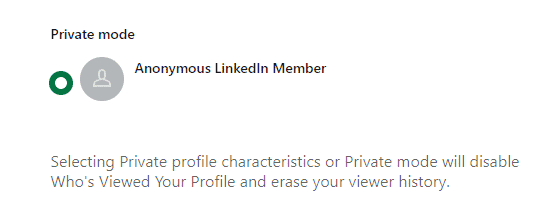
Now, once you’ve turned on private mode and you’ve determined your top competitors, here’s what you can do.
First, go to the personal profiles of your competitors.
Analyze their profiles and think about what you can do to improve.
For example, look at your summary, tagline, skills section, and more.
How can you optimize these based on your target audience?
Then, on the right, check out the People also viewed section.
There, you should find a list of similar people in your niche and industry.
Possibly their customers, colleagues, or even their target audience.
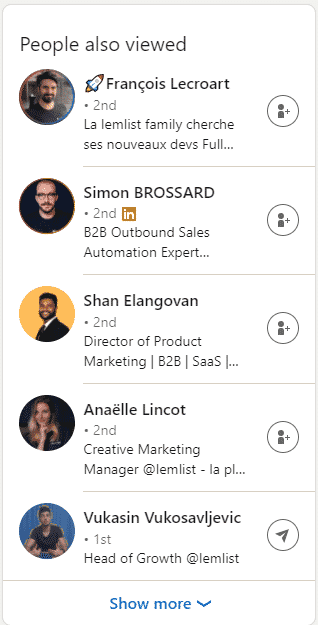
Wondering how to improve your LinkedIn profile based on proven examples? Check out our guide on top 5 proven LinkedIn summary examples for inspiration and writing tips.
Then, go to their company page on LinkedIn, scroll down, and select Ads under the Posts section.
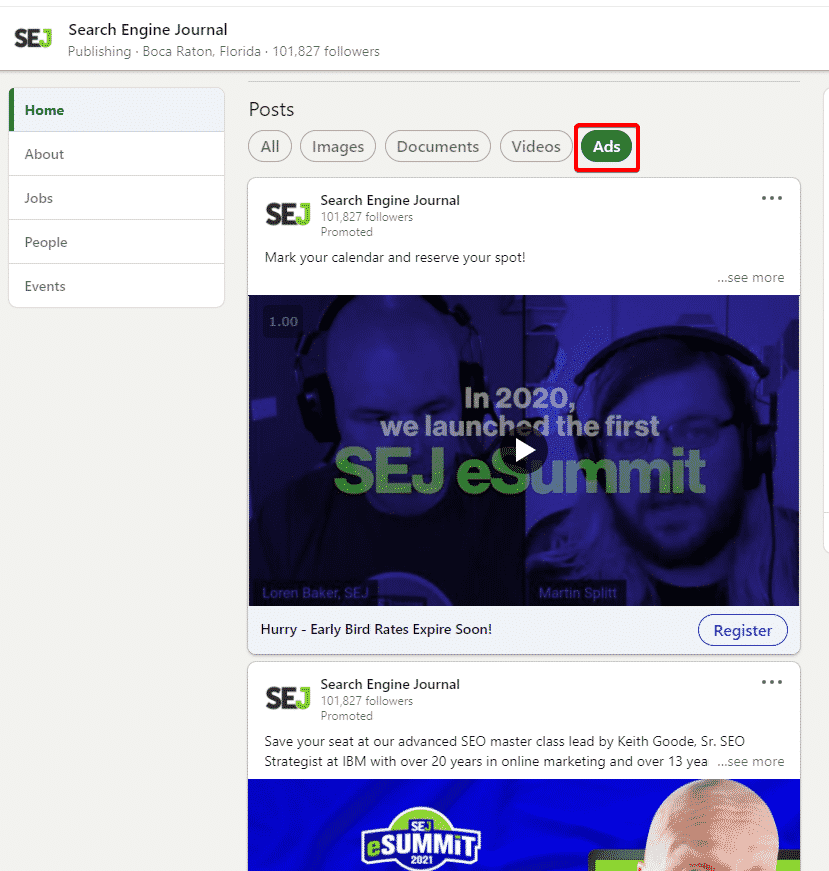
If you look at your competitor’s company page and see they’re not running ads, this can mean two things:
- There’s less competition and if you invest in LinkedIn ads, you’ll be able to stand out from your competitors and reach your target audience in a unique way no one else is focusing on. Don’t be afraid of trying something new just because your competitor isn’t doing it.
- They’ve already tried LinkedIn ads and decided they weren’t worth it. It might be hard to find out if this is the case from looking at a single competitor. So, you’ll have to do more research to figure this out.
If your competitors are indeed showing ads, you should make note of the ad format.
Analyze their ad copy, offer, and call-to-action.
Are they framed to appeal to a specific industry or a particular audience?
This may reveal what kind of demographic your competitors are going after.
Then, look at what they’re offering within the ad.
It could be a lead magnet (e.g. e-book, free consultation, or something else) or a general brand-awareness post.
Because LinkedIn ads are traditionally expensive, you should also make note of what stage of their marketing funnel these ads are in.
If the CTA is to download a whitepaper or read a blog post, this might be at the top of the marketing funnel.
If the ads are suggesting to book a demo or to buy now (conversions), then these ads are focusing on the middle or bottom of the marketing funnel
Wondering if LinkedIn ads are right for you? Check out our complete guide on LinkedIn advertising for an overview of different ad formats and other alternative solutions to ads.
With that in mind, you should then conduct an audit of your advertising and promotional strategy:
- What is your offer? Is it relevant to your target market?
- Is there anything you can do to improve? For example, if they’re promoting an article from 2018 that’s only 10 pages – can you write something more up-to-date and longer?
- Look outside LinkedIn and also analyze Facebook, Twitter, and other channels (we’ll teach you how to scrape Facebook and Twitter followers below).
3 LinkedIn Tactics That Take Advantage of Your Competitor’s Advertising Strategy
Once you know what your competitor’s advertising strategy is, you can use this in your LinkedIn outreach campaigns to target their audience.
Below, I’ll show you 3 different LinkedIn tactics that worked for us to take advantage of pre-existing followings on our competitor’s social media.
Here’s what you need to know.
Facebook group scraping LinkedIn outreach campaign
This one works if your competitor has an active Facebook group.
One of our competitors, Dux-Soup, has a Facebook group of up to 3.6K members.

Objective: Reach out to members of the Facebook group on LinkedIn and create a strong social selling campaign that educates them on why Expandi might be the better alternative. Using a clever growth-hacking tool and LinkedIn automation, this turned out to be extremely simple to set up and replicate.
Strategy: We scraped the Facebook group using Phantombuster’s Facebook Group Extractor and used LinkedIn Profile URL Finder to convert that list into a spreadsheet of LinkedIn profiles. Then, we uploaded the spreadsheet file into Expandi and created a connector campaign to reach out to the members of the group. In the connection request, we mentioned we were also part of the Dux-Soup user group, and most people were glad to comment because of the mutual interest in LinkedIn automation.
With a 72% acceptance rate, 49% response to follow-ups, and 42 booked demos, the campaign was a success.
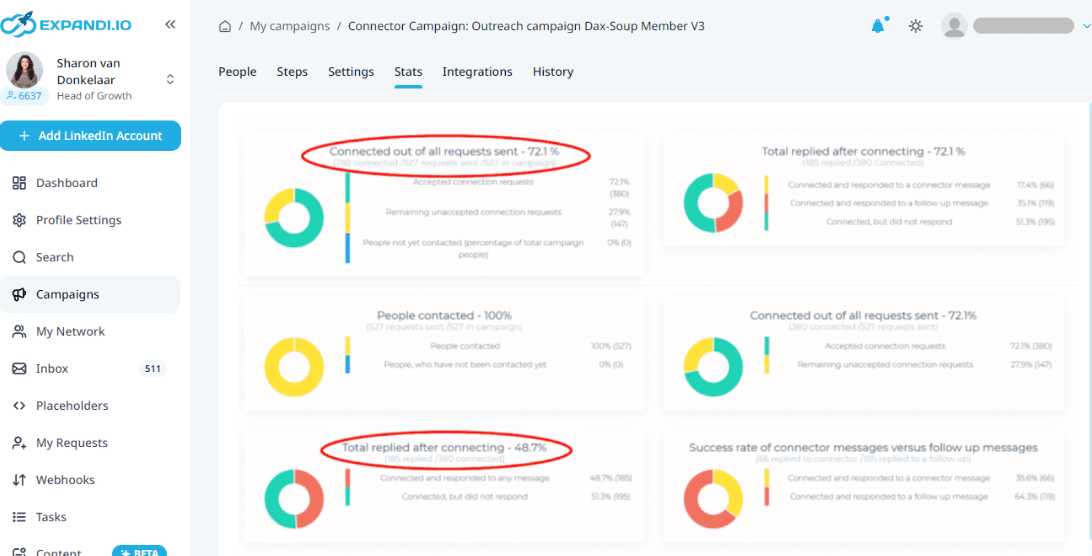
Check out the full guide on how to set this LinkedIn outreach campaign and the exact social selling templates we used here to start generating more leads.
Steal your competitor’s Twitter audience LinkedIn outreach campaign
With this guide, we’ll be focusing on your competitor’s Twitter audience.
For this campaign, we used Dux-Soups’ Twitter following.
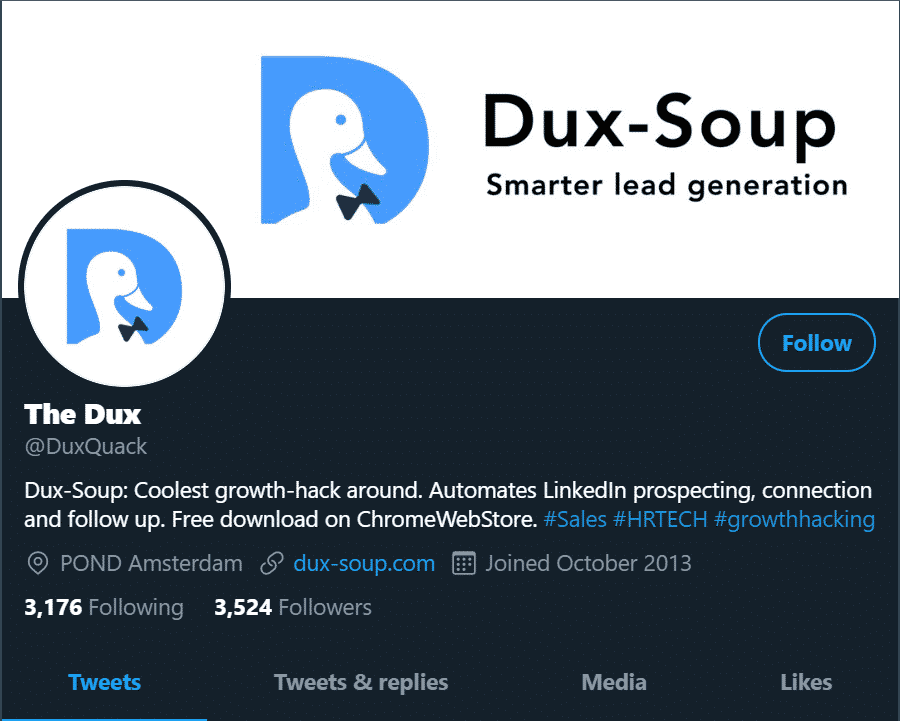
Objective: Scrape the list of Twitter followers to make sure we’re targeting a relevant audience and reach out to them on LinkedIn.
Strategy: This is similar to the above. We used TexAu’s Extract Twitter Followers automation, and then, their Find a LinkedIn Profile. Now, you can stop there and reach out to them on LinkedIn. But we took this step a bit further and connected the campaign with Zapier and Facebook ads. Essentially, we connected Facebook Ads Custom Audience to our campaign so that we could then retarget the same audience on Facebook.
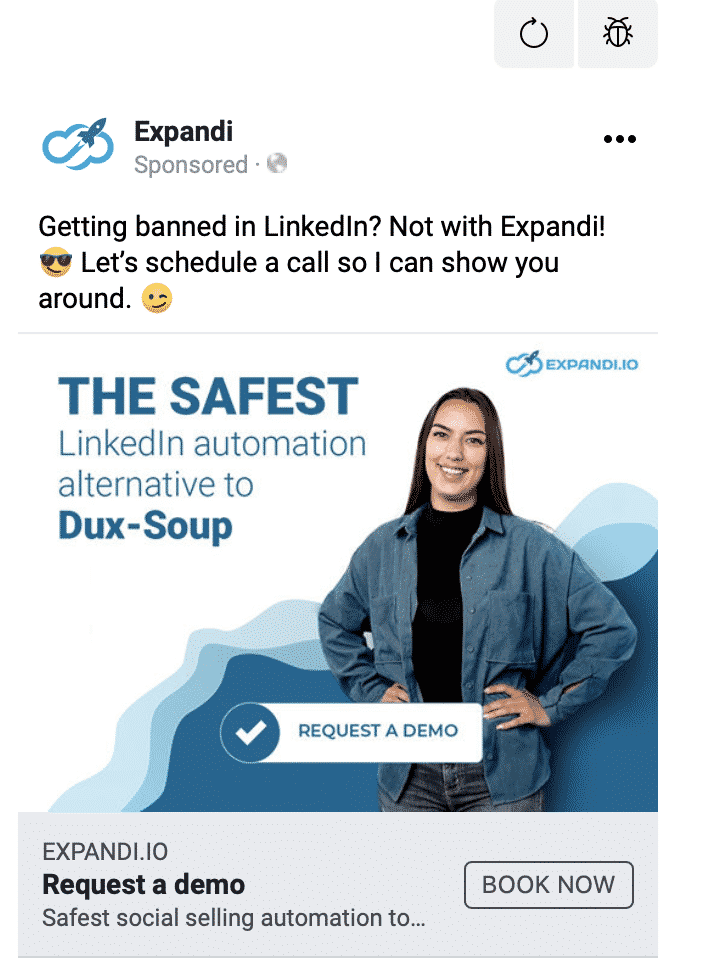
Check out the full omnichannel campaign and how to set up the marketing flow here: Steal Your Competitor’s Audience: LinkedIn + Twitter Growth Hack
LinkedIn content retargeting strategy
Here’s another simple lead generation strategy that relies on existing content (by your competitors or influencers in your niche).
Objective: Find a popular post in your niche and reach out to people who’ve engaged with it. If the post is about LinkedIn lead generating strategies, chances are, the people who commented on it are also interested in the topic. So, the goal here is to reach out to them with a solution.
Strategy: Find a post with a high engagement rate, copy the post link, Log in to Expandi, create a new search, select ‘Post Engagement’ and paste the LinkedIn post link. Once you reach out to people who commented on the post, you should also mention that you also like the influencer’s content in your connection request (mention something specific to be more authentic).
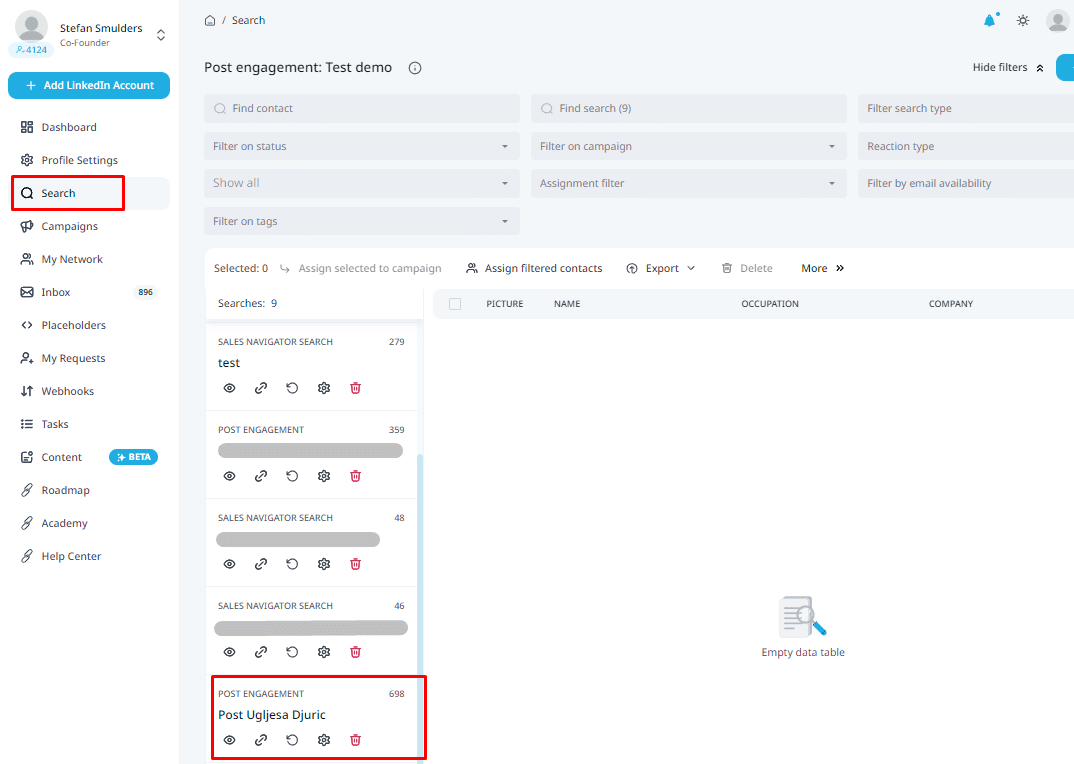
With this, we achieved a 72% acceptance rate and a 40% response to follow-ups.
Check out the full content retargeting LinkedIn strategy to see the exact templates we used and how to launch your messaging sequence on autopilot.
Conclusion
Finally, another strategy you might want to consider is cross-branding.
As an example, the Expandi and Hyperise integration allow marketers to leverage hyper-personalization with LinkedIn by using personalized images or GIFs in your outreach messaging.
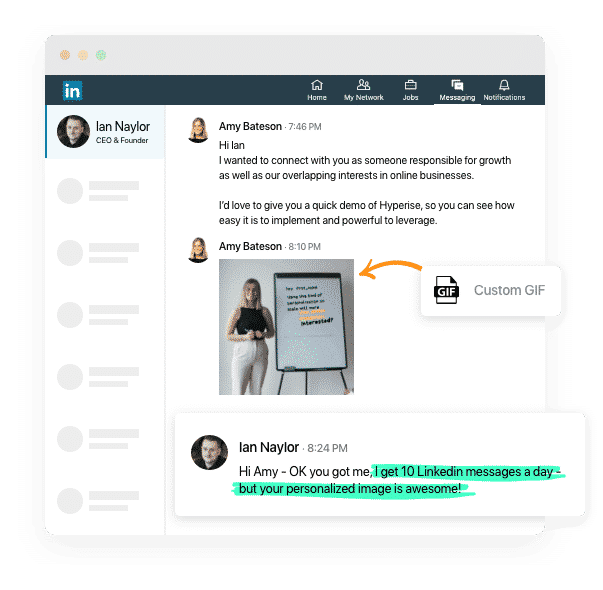
While this isn’t dependent on your competitor’s advertising strategy, a strong partnership can boost your lead generation efforts and allow you to reach a whole new, untapped market.
With the example of Expandi and Hyperise above, we managed to come up with a completely new and unique outreach method that no one is doing on LinkedIn yet.
Using it, we managed to stand out and capture attention and differentiate ourselves from our competitors.
Ready to start generating leads on LinkedIn on autopilot?
Get started using Expandi, the world’s safest LinkedIn automation and social selling tool, with a free 7-day trial.
Then, you can start using the above marketing and outreach strategies to take advantage of your competitor’s advertising strategy for outreach.
PS. Did you know we’re constantly sharing the latest outreach hacks and successful campaigns – down to the exact templates and subject lines in our private Facebook group? Be sure to join the LinkedIn Outreach Family for all things email marketing and LinkedIn outreach as well!
Also read:
You’ve made it all the way down here, take the final step
